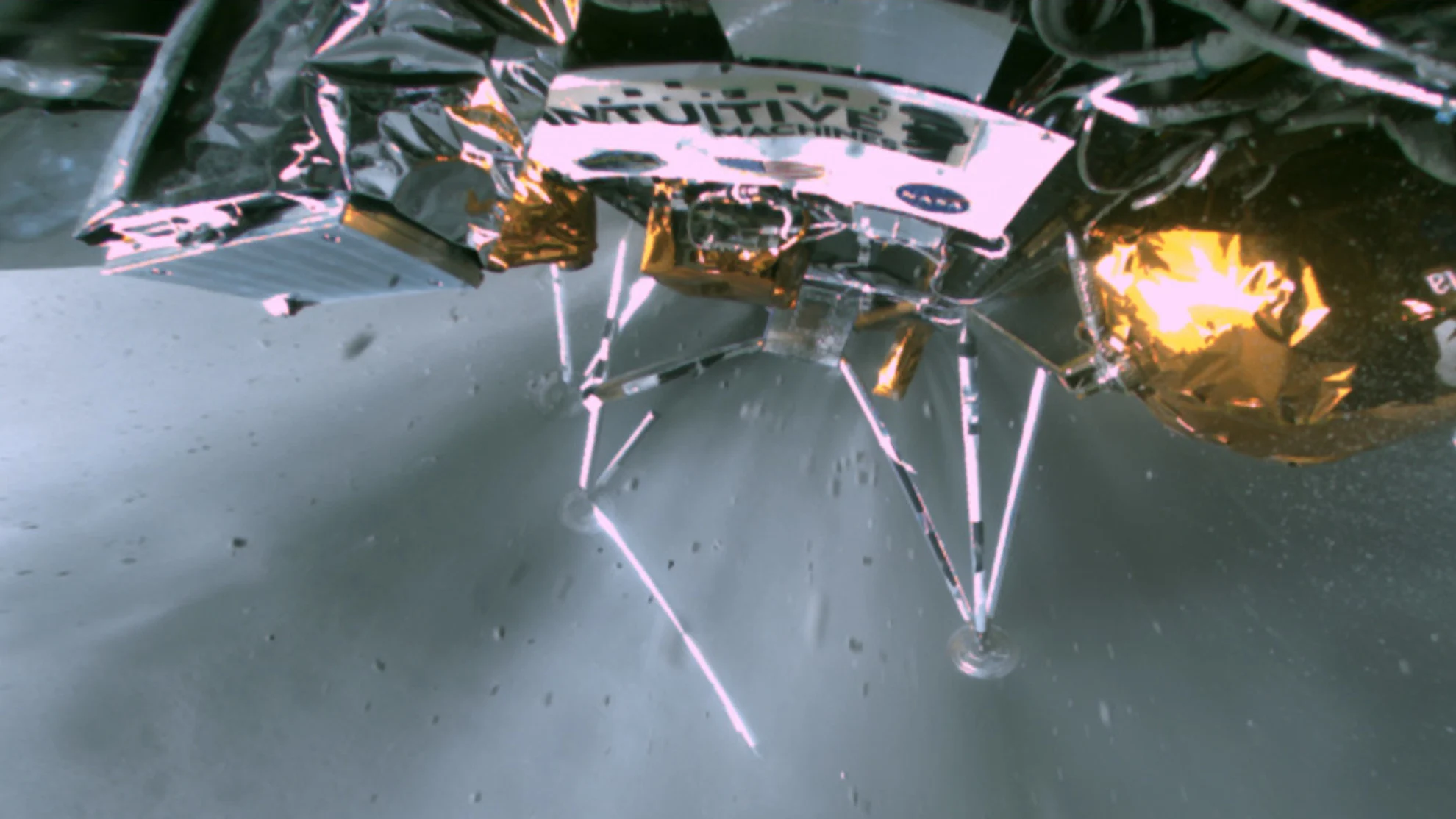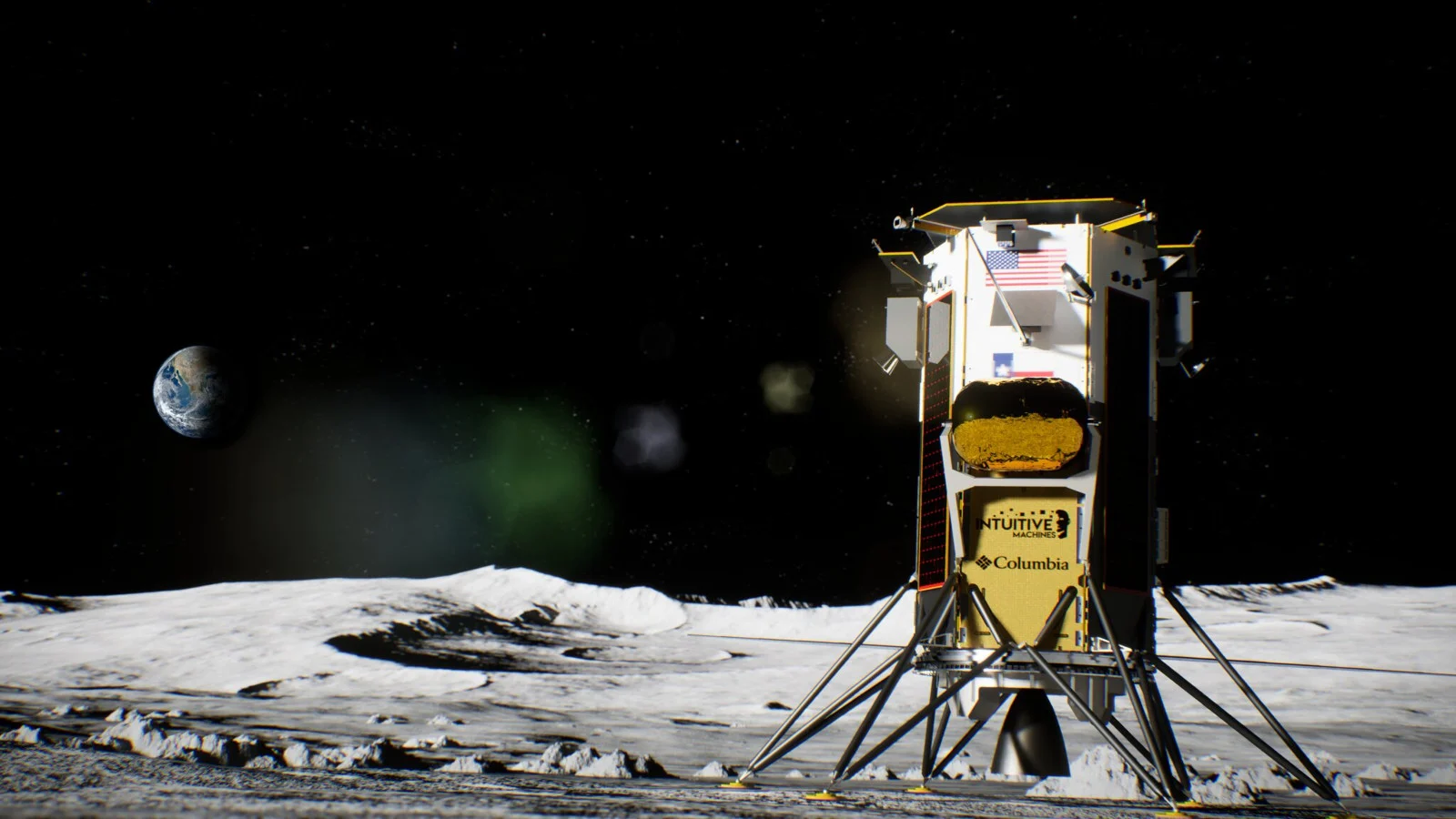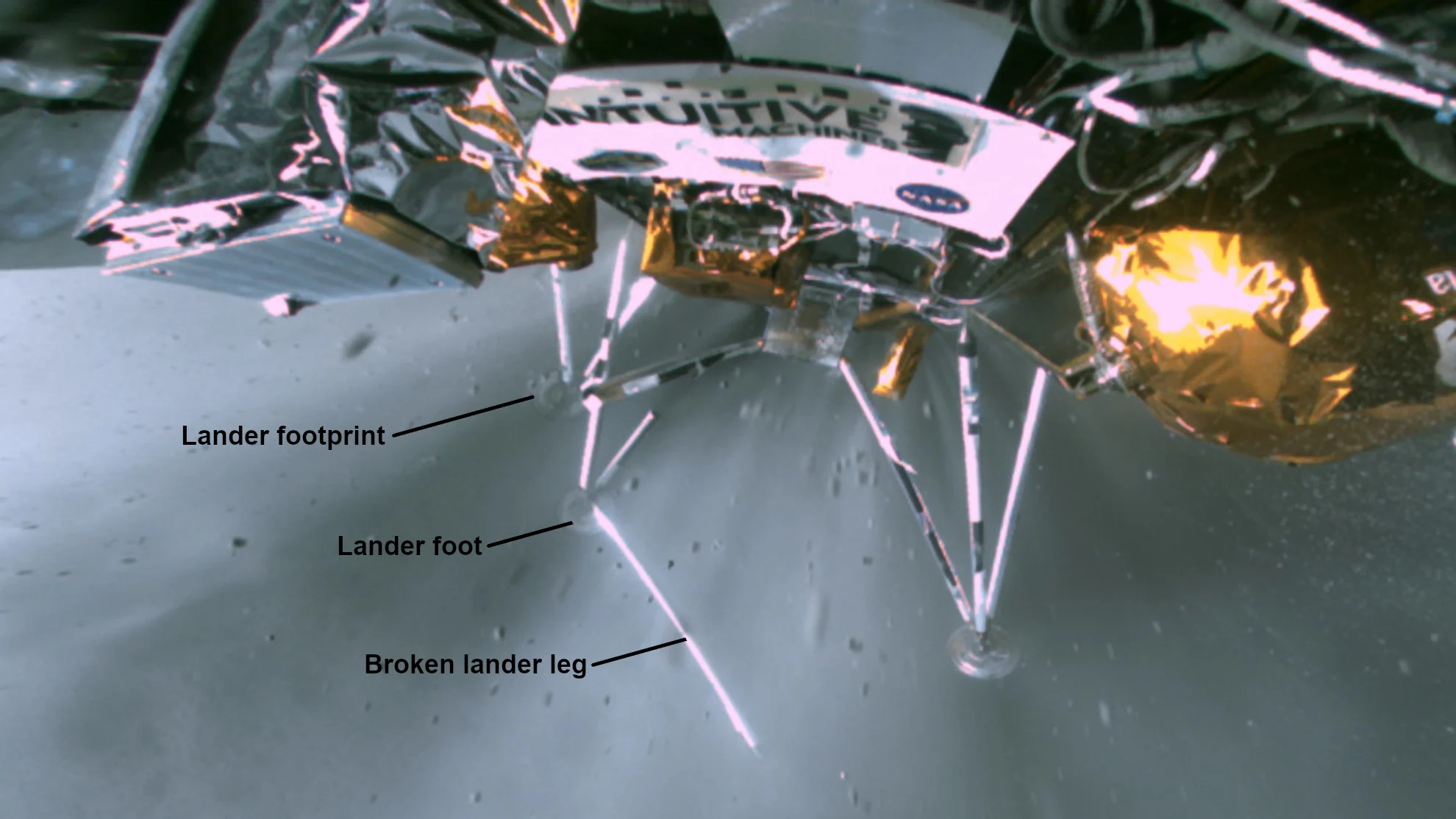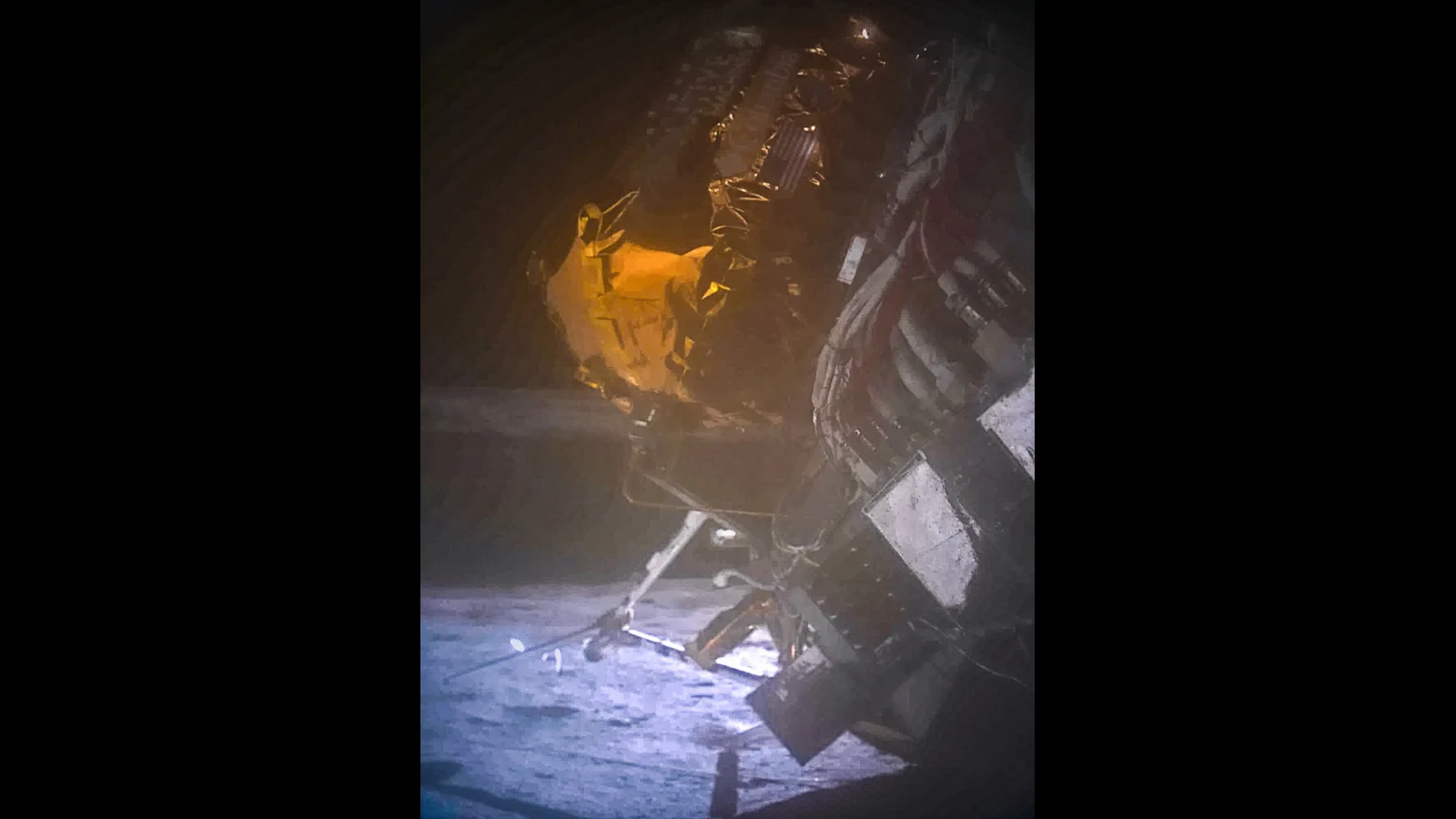
Odysseus Moon lander tucks in for the frigid lunar night. Will it wake up again?
After overcoming some incredible challenges to land on the Moon, can Odysseus survive the frigid lunar night?
After successfully touching down and spending a week conducting science on the surface of the Moon, Intuitive Machines' Odysseus robotic lander has gone to sleep for the long lunar night.
IM-1, the first robotic lunar mission flown by private company Intuitive Machines and the first to soft-land NASA hardware on the Moon in over 50 years, certainly had its fair share of issues.

This artist's conception drawing of Odysseus, the IM-1 Nova-C lander, depicts the robotic lander as having landed upright on the surface of the Moon. Credit: Intuitive Machines
After a launch delay due to fuel problems, Odysseus encountered issues with staying cool on its way to the Moon, resulting in a NASA instrument antenna deploying ahead of schedule. Then, as the lander neared its destination, the team discovered that the laser rangefinder — an instrument critical to the success of its landing — couldn't be activated, as a safety switch on the hardware was accidentally left on when the lander was packed up for launch. This required the team to perform an amazing last-minute fix by repurposing the lasers from an onboard NASA instrument to fill that role.
Most importantly, though, when the lander first contacted the lunar surface, it did so at a slightly higher elevation than expected. This meant that the touchdown was a bit more forceful than anticipated, which broke one of the six landing legs and caused Odysseus to slowly tip over onto its side once it had finally come to rest.
DON'T MISS: Everything you need to know for April's spectacular and rare solar eclipse

This image, taken by Odysseus on February 23, 2024, shows the view down the leading side of the lander just after it first touched the lunar surface. A footprint is clearly visible in the surface dust, and the impact was clearly hard enough that it snapped one of the lander's six support legs. Photo credit: Intuitive Machines. Annotations added by author.
Despite all that and more, both NASA and the Intuitive Machines mission team consider the mission to be an incredible success!
Odysseus soft landed on the Moon, closer to the lunar south pole than any other mission to date. Also, even though it has been lying mostly on its side, the lander still collected science data from the surface for around a week. That data will be invaluable for future Intuitive Machines missions and NASA's Artemis program.
As of February 28, though, "Odie" — as the mission team calls it — has gone to sleep on the Moon. Even from its location so close to the south pole, the lander still experiences nightfall and the lunar night lasts for a total of 14 Earth days.
SPRING 2024: Get an in-depth look at the Spring Forecast, tips to plan for it, and much more!

The landing site of Intuitive Machines' Odysseus, near the crater known as Malapert A, just 5 degrees north of the lunar south pole. Credit: NASA
According to the Intuitive Machines team, when the Sun rises again over Odysseus in two weeks, they will see if the lander can wake up again.
"We're confident that when the Sun comes back up over Odysseus that the solar arrays will energize and they'll send power," Tim Crain, the chief technology officer and co-founder of Intuitive Machines, said during a NASA briefing on February 28. "The real question is, are the batteries there to receive that power and pass it on, and then will the electronics within our computer and radio have withstood that deep cold?"

Odysseus lies on its side on the surface of the Moon. The deep shadows of the south polar region are visible near the lander. Credit: Intuitive Machines
Although temperatures on the daylit side of the Moon can reach up to 120°C, once the Sun sets, hardware on the surface must endure a plunge down to -133°C or even colder. According to NASA, temperatures in the perpetually shadowed craters near Odysseus' location have been measured down near -250°C.
In those frigid conditions, hardware must have dedicated heaters to keep warm enough to survive during the two-week-long night.
Further updates on the mission will likely come in around mid-March.











